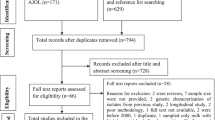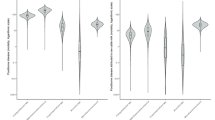Abstract
Objective
Pasteurization kills harmful microorganisms found in milk. While consumption of unpasteurized milk and its products is discouraged due to increased risk of infections, some individuals prefer unpasteurized dairy products. Our objective was to estimate the burden of illness from outbreaks arising from consumption of unpasteurized and pasteurized dairy products in Canada and the United States.
Methods
We conducted a systematic review of dairy-associated outbreaks in Canada and the USA from 2007 onward. We searched MEDLINE, Embase, Cochrane Library, TRIP Database for guidelines, and North American government agency websites up to October 2020. We included outbreak reports where the pathogenic microbe was confirmed in both the patient and the dairy product through laboratory testing.
Synthesis
Thirty-two disease outbreaks were linked to dairy consumption. Twenty outbreaks involving unpasteurized products resulted in 449 confirmed cases of illness, 124 hospitalizations, and five deaths. Twelve outbreaks involving pasteurized products resulted in 174 confirmed cases of illness, 134 hospitalizations, 17 deaths, and seven fetal losses. Listeria accounted for 10 out of 12 outbreaks from pasteurized products from 2007 through 2020.
Conclusion
Public warnings about the risk of unpasteurized dairy consumption need to continue and pregnant women and immunocompromised hosts need to be made aware of foods at high risk of contamination with Listeria.
Résumé
Objectif
La pasteurisation tue les micro-organismes dangereux contenus dans le lait. Même si la consommation du lait non pasteurisé et ses produits fût déconseillée en raison d’un risque accru d’infection, certaines personnes préfèrent des produits laitiers non pasteurisés. Notre objectif était d’évaluer le fardeau de maladie des éclosions résultant de la consommation des produits laitiers non pasteurisés et pasteurisés au Canada et aux États-Unis.
Méthode
Nous avons mené une revue systématique des éclosions liées aux produits laitiers au Canada et aux États-Unis depuis 2007. Nous avons cherché dans MEDLINE, Embase, Cochrane Library, TRIP Database et les sites web des agences gouvernementales Nord-Américaines pour la période 2007 jusqu’au mois d’octobre 2020. Nous avons inclus des rapports d’éclosion lorsque les essais en laboratoire ont confirmé la présence du microbe pathogène dans le patient ainsi que dans le produit laitier.
Résultats
Trente-deux éclosions étaient liées à la consommation des produits laitiers. Les produits non pasteurisés étaient impliqués dans 20 éclosions, avec 449 cas de maladie confirmés, 124 hospitalisations et 5 morts. Les produits pasteurisés étaient impliqués dans 12 éclosions, avec 174 cas de maladie confirmés, 134 hospitalisations, 17 morts et sept morts fœtales. Listeria comptait pour 10 des 12 éclosions des produits pasteurisés de 2007 à 2020.
Conclusion
Les avis publics au sujet du risque de la consommation des produits laitiers non pasteurisés devraient continuer et les femmes enceintes et les hôtes immunodéprimés devraient être informés de la nourriture à haut risque de la contamination avec Listeria.

Similar content being viewed by others
References
Beecher, C. (2012). 19 ill with E. coli in Oregon raw milk outbreak. Food Safety News. Retrieved from https://www.foodsafetynews.com/2012/04/post-5/.
California Department of Public Health. (2008). Campylobacteriosis among persons consuming unpasteurized milk from a cow-leasing program. Retrieved from www.marlerblog.com/uploads/file/CDPH%20Report%20(Tardiff).pdf.
Health Canada. (2013). Raw or unpasteurized milk. Retrieved from http://www.canada.ca/en/health-canada/services/milk-infant-formula/raw-or-unpasteurized-milk.html.
Centers for Disease Control and Prevention. (2007). Foodborne Active Surveillance Network (FoodNet) population survey atlas of exposures, 2006-2007. U.S. Department of Health and Human Services, Centers for Disease Control and Prevention.
Centers for Disease Control and Prevention. (2008). Outbreak of Listeria monocytogenes infections associated with pasteurized milk from a local dairy--Massachusetts, 2007. MMWR, 57(40), 1097–1100.
Centers for Disease Control and Prevention. (2013). Multistate outbreak of listeriosis linked to Crave Brothers Farmstead Cheeses (final update). Retrieved from https://www.cdc.gov/listeria/outbreaks/cheese-07-13/index.html.
Centers for Disease Control and Prevention. (2015). Guide to confirming an etiology in foodborne disease outbreak. Retrieved from https://www.cdc.gov/foodsafety/outbreaks/investigating-outbreaks/confirming_diagnosis.html.
Centers for Disease Control and Prevention. (2016). Multistate outbreak of listeriosis linked to raw milk produced by Miller’s Organic Farm in Pennsylvania (Final Update). Retrieved from https://www.cdc.gov/listeria/outbreaks/raw-milk-03-16/index.html.
Centers for Disease Control and Prevention. (2017a). Raw milk questions and answers. Retrieved from http://www.cdc.gov/foodsafety/rawmilk/raw-milk-questions-and-answers.html#history.
Centers for Disease Control and Prevention. (2017b). Multistate outbreak of listeriosis linked to soft raw milk cheese made by Vulto Creamery (Final Update). Retrieved from https://www.cdc.gov/listeria/outbreaks/soft-cheese-03-17/index.html.
Chan, Y. C., & Wiedmann, M. (2009). Physiology and genetics of Listeria monocytogenes survival and growth at cold temperatures. Crit Rev Food Sci Nutr, 49(3), 237–253.
Christidis, T., Pintar, K. D., Butler, A. J., Nesbitt, A., Thomas, M. K., Marshall, B., et al. (2016). Campylobacter spp. prevalence and levels in raw milk: A systematic review and meta-analysis. Journal of Food Protection, 79(10), 1775–1783.
Committee on Infectious Diseases, Committee on Nutrition for the American Academy of Pediatrics. (2014). Consumption of raw or unpasteurized milk and milk products by pregnant women and children. Pediatrics, 133(1), 175–179.
Currie, A., Galanis, E., Chacon, P. A., Murray, R., Wilcott, L., Kirkby, P., et al. (2018). Outbreak of Escherichia coli O157:H7 infections linked to aged raw milk gouda cheese, Canada, 2013. Journal of Food Protection, 81(2), 325–331.
Davis, K. R., Dunn, A. C., Burnett, C., McCullough, L., Dimond, M., Wagner, J., et al. (2016). Campylobacter jejuni infections associated with raw milk consumption--Utah, 2014. MMWR, 65(12), 301–305.
Dewey-Mattia, D., Manikonda, K., Hall, A. J., Wise, M. E., & Crowe, S. J. (2018). Surveillance for foodborne disease outbreaks - United States, 2009-2015. MMWR, 67(10), 1–11.
Gaulin, C., Ramsay, D., & Bekal, S. (2012). Widespread listeriosis outbreak attributable to pasteurized cheese, which led to extensive cross-contamination affecting cheese retailers, Quebec, Canada, 2008. Journal of Food Protection, 75(1), 71–78.
Gerner-Smidt, P., & Whichard, J. M. (2009). Foodborne disease trends and reports. Foodborne Pathogens & Disease, 6(1), 1–5.
Guh, A., Phan, Q., Nelson, R., Purviance, K., Milardo, E., Kinney, S., et al. (2010). Outbreak of Escherichia coli O157 associated with raw milk, Connecticut, 2008. Clinical Infectious Diseases, 51(12), 1411–1417.
Headrick, M. L., Korangy, S., Bean, N. H., Angulo, F. J., Altekruse, S. F., Potter, M. E., et al. (1998). The epidemiology of raw milk-associated foodborne disease outbreaks reported in the United States, 1973 through 1992. American Journal of Public Health, 88(8), 1219–1221.
Heiman, K. E., Garalde, V. B., Gronostaj, M., Jackson, K. A., Beam, S., Joseph, L., et al. (2015). Multistate outbreak of listeriosis caused by imported cheese and evidence of cross-contamination of other cheeses, USA, 2012. Epidemiology & Infection, 144(13), 2698–2708.
Jackson, K. A., Biggerstaff, M., Tobin-D'Angelo, M., Sweat, D., Klos, R., Nosari, J., et al. (2011). Multistate outbreak of Listeria monocytogenes associated with Mexican-style cheese made from pasteurized milk among pregnant, Hispanic women. Journal of Food Protection, 74(6), 949–953.
Jackson, K. A., Gould, L. H., Hunter, J. C., Kucerova, Z., & Brendan, J. (2018). Listeriosis outbreaks associated with soft cheeses, United States, 1998–2014. Emerging Infectious Disease Journal, 24(6), 1116–1118.
Jay-Russell, M. T. (2010). Raw (unpasteurized) milk: Are health-conscious consumers making an unhealthy choice? Clinical Infectious Diseases, 51(12), 1418–1419.
Langer, A. J., Ayers, T., Grass, J., Lynch, M., Angulo, F. J., & Mahon, B. E. (2012). Nonpasteurized dairy products, disease outbreaks, and state laws-United States, 1993-2006. Emerging Infectious Diseases, 18(3), 385–391.
Le Saux, N., & Canadian Pediatric Society, Infectious Diseases and Immunization Committee. (2012). Biologic response modifiers to decrease inflammation: Focus on infection risks. Paediatric Child Health, 17(3), 147–150.
Leamy, R. J., Heiss, S. N., & Roche, E. (2014). The impact of consumer motivations and sources of information on unpasteurized milk consumption in Vermont, 2013. Food Protection Trends, 34(4), 216–225.
Lejeune, J. T., & Rajala-Schultz, P. J. (2009). Food safety: Unpasteurized milk: A continued public health threat. Clinical Infectious Diseases, 48(1), 93–100.
McCollum, J. T., Williams, N. J., Beam, S. W., Cosgrove, S., Ettestad, P. J., Ghosh, T. S., et al. (2012). Multistate outbreak of Escherichia coli O157:H7 infections associated with in-store sampling of an aged raw-milk Gouda cheese, 2010. Journal of Food Protection, 75(10), 1759–1765.
McGowan, J., Sampson, M., Salzwedel, D. M., Cogo, E., Foerster, V., & Lefebvre, C. (2016). PRESS Peer Review of Electronic Search Strategies: 2015 guideline statement. Journal of Clinical Epidemiology, 75, 40–46.
Mungai, E. A., Behravesh, C. B., & Gould, L. H. (2015). Increased outbreaks associated with nonpasteurized milk, United States, 2007-2012. Emerging Infectious Diseases, 21(1), 119–122.
Oliver, S. P., Boor, K. J., Murphy, S. C., & Murinda, S. E. (2009). Food safety hazards associated with consumption of raw milk. Foodborne Pathogens & Disease, 6(7), 793–806.
Pluye, P., Robers, E., Cargo, M., Bartlett, G., O'Cathain, A., Griffiths, F., et al. (2011). Proposal: A mixed methods appraisal tool for systematic mixed studies reviews. Retrieved from http://mixedmethodsappraisaltoolpublic.pbworks.com.
Public Health Agency of Canada. (2012). National single day food consumption report: Analysis of the 24-hour dietary recall data from the Canadian Community Health Survey (CCHS), cycle 2.2, nutrition (2004), and assessment for food consumption frequency among Canadians. Public Health Agency of Canada.
Public Health Ontario, Raw Milk Working Group. (2013). PHO technical report: Update on raw milk consumption and public health: A scientific review for Ontario public health professionals. Queen's Printer for Ontario.
Schlech, W. F. (2019). Epidemiology and clinical manifestations of Listeria monocytogenes infection. Microbiol Spectr, 7(3). https://doi.org/10.1128/microbiolspec.GPP3-0014-2018
Shiferaw, B., Verrill, L., Booth, H., Zansky, S. M., Norton, D. M., Crim, S., et al. (2012). Sex-based differences in food consumption: Foodborne Diseases Active Surveillance Network (FoodNet) Population Survey, 2006-2007. Clinical Infectious Diseases, 54(Suppl 5), S453–S457.
Steele, J. H. (2000). History, trends, and extent of pasteurization. Journal of the American Veterinary Medical Association, 217(2), 175–178.
U.S. Food and Drug Administration. (1987). FDA plans to ban raw milk. U.S. Government Printing Office.
U.S. Food and Drug Administration. (2020). Code of Federal Regulations Title 21, Chapter 1, Subchapter B - Food for human consumption, part 133 cheeses and related cheese products. Retrieved from http://www.accessdata.fda.gov/scripts/cdrh/cfdocs/cfcfr/CFRSearch.cfm?CFRPart=133.
Whitehead, J., & Lake, B. (2018). Recent trends in unpasteurized fluid milk outbreaks, legalization, and consumption in the United States. PLoS Curr. https://doi.org/10.1371/currents.outbreaks.bae5a0fd685616839c9cf857792730d1
Acknowledgements
The authors acknowledge the contribution of Tara Landry for her peer review of the search strategy, and those of Liza Bialy and Shelly Jun for quality assessment of the included studies. We also acknowledge Judy D. Greig and Mariola Mascarenhas with the Public Health Agency of Canada for their assistance in searching the Publicly Available International Foodborne Outbreak Database (PAIFOD).
Availability of data and material
Data are available from the corresponding author by reasonable request.
Code availability
Not applicable.
Funding
This work was supported by the Alberta Strategy for Patient-Oriented Research (SPOR) SUPPORT Unit Knowledge Translation Platform, which is funded by Alberta Innovates (G201900663) and the Canadian Institutes of Health Research (201305).
Author information
Authors and Affiliations
Contributions
MS, RF, and JLR conceived the project and undertook the data collection and analysis; MS and NAB wrote the first draft; all the authors contributed toward the intellectual content of the manuscript.
Corresponding author
Ethics declarations
Conflict of interest
The authors declare no competing interests.
Ethics approval
This article does not contain any studies with human participants or animals performed by any of the authors.
Consent to participate
Not applicable
Consent for publication
Not applicable
Additional information
Publisher’s note
Springer Nature remains neutral with regard to jurisdictional claims in published maps and institutional affiliations.
Rights and permissions
About this article
Cite this article
Sebastianski, M., Bridger, N.A., Featherstone, R.M. et al. Disease outbreaks linked to pasteurized and unpasteurized dairy products in Canada and the United States: a systematic review. Can J Public Health 113, 569–578 (2022). https://doi.org/10.17269/s41997-022-00614-y
Received:
Accepted:
Published:
Issue Date:
DOI: https://doi.org/10.17269/s41997-022-00614-y




